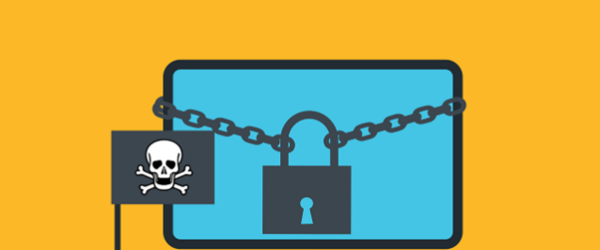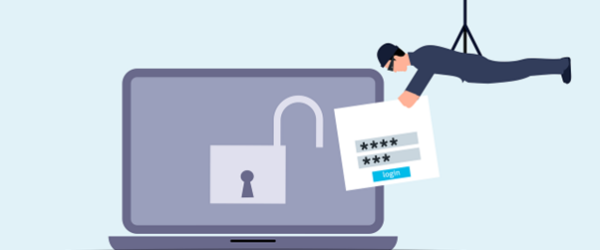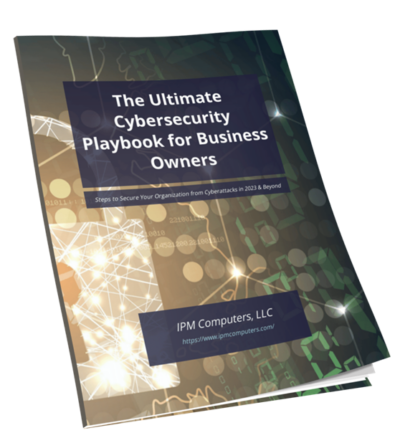Understanding the impact of cybersecurity hygiene is no longer just a precaution–it’s a necessity. Cybersecurity hygiene refers to the fundamental practices and steps that organizations must undertake to maintain the health and security of their systems and data.
Just like personal hygiene wards off infections and promotes overall health, cybersecurity hygiene prevents digital threats and intrusions from compromising business operations.
With the integrity of your business at stake, it’s critical to recognize that IT security in Wallace is a strategic asset rather than an expense. The resilience of your company’s digital infrastructure is intrinsically linked to its overall performance and reputation. A breach can tarnish your brand, resulting in financial loss and reduced consumer confidence. That’s why partnering with a managed IT provider in Wallace NC can be crucial for maintaining robust protection.
Assessing the risks associated with inadequate cybersecurity practices is the first step in fortifying your digital fort. Businesses need to conduct comprehensive risk analyses to identify potential vulnerabilities within their systems.
Cybersecurity is not a one-time fix but an ongoing commitment. Implementing these best practices requires an investment of time, resources, and expertise—an investment that pays dividends in safeguarding your company’s digital future.
Essential Cybersecurity Policies Every Business Should Have
To create a cyber-secure environment, it’s imperative for businesses to lay down a solid foundation of cybersecurity policies. These guidelines serve as the governance framework that dictates how data should be handled, protected, and shared.
Password management is more than just choosing strong passwords. A comprehensive password policy covers creation, storage, and regular updating of passwords. Implementing password managers and educating employees on avoiding common passwords can dramatically reduce the risk of unauthorized access.
Keeping software up to date is a deceptively simple yet crucial policy. Regular updates and patches are released to address vulnerabilities that could be exploited by attackers. Timely update protocols are your first line of defense against numerous cyber threats and are a non-negotiable aspect of cybersecurity hygiene.
Access control cannot be overstated in its importance. Access to sensitive data should be given on a need-to-know basis, and this is where an effective access control policy comes into play. It ensures that employees have just enough access to perform their jobs, thereby minimizing the risk of internal and external data breaches.
Reinforcing Your Defenses Against Phishing and Email Scams
Email communications are a vital component of business operations but can also be a vulnerable point of entry for cybercriminals. Effective defense against phishing and email scams begins with recognizing the threat and understanding how to mitigate it.
Awareness is the first line of defense: recognizing the signs of phishing—such as unexpected requests for information, unsolicited attachments, or links from unknown sources—can prevent a threat from taking root. Education is key, and regular training sessions can empower employees to identify and correctly handle potential scams.
Beyond training, organizations should implement comprehensive email security policies. This includes utilizing advanced email filtering solutions that can detect spam, phishing attempts, and malicious emails before they reach inboxes.
It’s also advantageous to set up verification procedures for financial transactions or sensitive information requests to prevent successful impersonation attempts.
Even with stringent policies and filtering technologies, human error is always a possibility. Encouraging a culture of vigilance and implementing a straightforward reporting process for suspicious emails can drastically reduce the chances of successful email-based attacks. When employees feel confident in recognizing and reporting threats, businesses can stay one step ahead of cybercriminals.
The Significance of Multi-Factor Authentication
Securing accounts goes beyond a strong password; multi-factor authentication (MFA) has become an essential layer of security. MFA uses two or more verification factors to access an account, making unauthorized access much more challenging for potential intruders.
MFA protects against unauthorized access by requiring additional verification steps that a hacker is unlikely to bypass without triggering an alert. This could be anything from a text message code to biometric verification.
MFA serves as a dynamic barrier, adapting to various attempts to access sensitive information, and it functions as a critical checkpoint that can catch and halt suspicious activities.
Implementing MFA can be as straightforward or as complex as your business needs demand. For smaller enterprises, simple solutions like SMS codes or mobile authenticator apps can suffice, whereas larger organizations may require in-depth solutions like key fobs or biometric authentication. What’s important is finding a balance that does not overly complicate the user experience while ensuring security.
With the rise in remote work and the increased need for secure access to networks and systems, MFA stands as an industry-recommended best practice. When implemented alongside other cybersecurity measures, it significantly enhances your defenses.
Elevating Data Protection Through Encryption
Encryption acts as an essential safeguard for your business, converting sensitive information into a code to prevent unauthorized access. It’s a powerful tool in the cybersecurity arsenal, serving as a formidable barrier against data breaches and cyber espionage.
Understanding the necessity of encryption begins with recognizing the vulnerability of unsecured data. Whether in transit or at rest, unencrypted data can be intercepted and exploited, potentially leading to financial and reputational damage. Encryption technology encodes this data, ensuring that even if compromised, the information remains indecipherable without the proper decryption key.
When selecting tools and techniques for effective data encryption, businesses should consider factors like the type of data being protected, regulatory requirements, and the level of security needed.
Utilizing end-to-end encryption for emails and cloud storage, disk encryption for physical drives, and a secure sockets layer (SSL) for websites are all practices that significantly improve your data’s security.
Best practices for data handling and storage further reinforce encryption efforts. Establishing strict protocols for who can access encrypted data, maintaining secure backups, and regularly updating encryption keys prevent unauthorized intrusions and data loss. Training employees on the importance of encryption and secure data practices ensures everyone is committed to maintaining the protective barrier.
With cyber threats evolving, encryption is no longer an option but a requirement. By incorporating comprehensive encryption strategies, businesses can protect vital information and preserve client and investor trust.
Cultivating a Culture of Security Among Employees
Creating a secure cyber environment within a business involves more than just technology; it requires establishing a culture rooted in security awareness. A culture of security begins with the understanding that every employee plays a pivotal role in safeguarding the company’s digital assets.
The effectiveness of any cybersecurity strategy depends largely on the human element. Employees need to be educated on the various cybersecurity threats and the importance of their everyday actions in preventing breaches.
Organizations should invest in developing engaging training programs that cover everything from recognizing phishing attempts to proper data handling procedures.
It’s crucial to ensure that this training is not a one-time event but an ongoing process. As cyber threats evolve, so should training. Regular updates, workshops, and simulations can help keep cybersecurity at the forefront of employees’ minds.
Tracking and enhancing security awareness is also a continuous challenge. Clear communication channels, incentive programs for reporting suspicious activities, and regularly scheduled reviews of security practices can help in maintaining and improving the workforce’s cyber knowledge and response capabilities.
When employees understand the stakes and feel empowered to act, they transform from potential security liabilities into invaluable defenders of the organization’s digital integrity. Instilling such a culture is not instantaneous; it takes time, commitment, and consistent effort. Yet, the payoffs, in terms of risk reduction and response preparedness, are unquestionably worthwhile.
Building a Secure Network Infrastructure
A business’s network infrastructure is a critical pillar of cybersecurity. With a solid network security strategy, you can control access to sensitive information, monitor malicious activity, and respond to threats swiftly, thereby reducing the window of opportunity for cyber attackers.
A secure network’s critical components include not only physical hardware but also the configuration of software solutions and the implementation of secure communication protocols. It is vital to ensure all network equipment, such as routers, firewalls, and switches, are up to date and configured correctly to defend against cyber threats effectively.
Managing firewalls and intrusion detection systems (IDS) are paramount in creating a formidable barrier against unauthorized access. These systems act as gatekeepers, analyzing incoming and outgoing network traffic based on predetermined security rules. Proper setup and regular updates to these systems are essential in adapting to new threats that emerge constantly.
Establishing secure Wi-Fi standards and practices is equally important, especially for businesses that offer wireless connectivity to employees or customers. This includes implementing strong encryption, hiding the network SSID, and ensuring secure guest access, among other measures.
Regular Audits and Compliance Checks
A resilient cybersecurity posture requires ongoing vigilance, and regular audits and compliance checks play an indispensable role in revealing the strengths and weaknesses of your security strategy. Audits provide a systematic review of your security measures, ensuring they meet the exhaustive demands of the modern threat landscape.
Audits are the diagnostic tool of cybersecurity—they assess your organization’s protective measures, identify vulnerabilities, and suggest enhancements. They play a central role in cybersecurity maintenance, allowing businesses to rectify issues before they are exploited by opportunistic attackers.
Staying aligned with industry standards and regulations is not just about following rules—it’s about adopting a security baseline that’s recognized as robust and efficient. Compliance with frameworks such as ISO/IEC 27001, GDPR, or HIPAA reassures clients that their data is handled with the highest level of care and expertness.
Your journey towards a secure cyber environment doesn’t end with meeting compliance requirements. Continuous improvement is vital, which means building a roadmap for regularly updating and refining your security practices.
This proactive planning is crucial for staying not just one step ahead of cyber threats but preparing for the shifting sands of technological advancements and regulatory landscapes.
Dealing with Data Breaches
Despite the most robust safeguards, the possibility of a data breach remains a concern for any business. Adopting a dual strategy that focuses on both prevention and a measured response is imperative for minimizing risk and mitigating the impact should an intrusion occur.
Pinpointing vulnerabilities before they are exploited is the cornerstone of prevention. This proactive approach involves regular security assessments, penetration testing, and staying informed about the latest cyber threats.
In the unfortunate event of a data breach, having a clear, actionable response plan is essential. This plan should outline the immediate steps to contain the breach, assess the damage, and communicate with stakeholders transparently.
Timely actions can limit the scope of the breach, safeguard other unperturbed systems, and begin the process of forensic analysis to understand how the breach occurred.
Post-breach, actions to restore confidence and trust should be the focus. This includes notifying affected parties, offering support to mitigate potential harm, and learning from the incident to strengthen security going forward. Transparent communication is crucial for maintaining stakeholder trust and demonstrating your commitment to rectifying the situation.
A comprehensive approach to handling data breaches will not only deal with the immediate ramifications but also set the stage for improved security practices and resilience against future incidents.
Managed IT Provider in Wallace NC: A Proactive Mindset Matters For IT Security
In summary, establishing and maintaining effective cybersecurity hygiene is not merely a technical obligation; it’s a strategic imperative that underpins the very survival and prosperity of modern businesses.
As we’ve explored, from the robustness of passwords and updates to the critical nature of employee awareness and network infrastructure, each aspect of cybersecurity forms an interconnected bastion against the relentless tide of cyber threats.
Organizations that embrace a comprehensive approach to digital defense—not as a series of disjointed tasks but as an ongoing culture of vigilance and adaptation—will be the ones to thrive. Let’s not forget that cybersecurity is not static; it’s a dynamic field that demands constant attention, regular reassessment, and a willingness to evolve.
Remember, the cost of a breach can be catastrophic, not only in terms of financial loss but also in the erosion of customer trust and brand reputation. Hence, investing in cybersecurity is not an overhead but the hallmark of visionary leadership that values business continuity.
Frequently Asked Questions About Cybersecurity
What’s cybersecurity hygiene and why is it important for my business?
Cybersecurity hygiene comprises the series of routine, foundational procedures and practices that businesses implement to maintain and enhance the security of their IT infrastructure.
Just as personal hygiene practices reduce the risk of illness, cybersecurity hygiene practices reduce the risk of data breaches, malware infection, and other cyber threats that can significantly disrupt your business operations.
- Adopting a cybersecurity hygiene regimen is essential for several reasons:
- It helps protect sensitive data from unauthorized access and theft.
- It ensures compliance with regulatory requirements and industry standards, avoiding potential fines and legal issues.
- It creates a safer environment for customers to do business with you, thereby building trust and loyalty.
- It helps maintain your organization’s reputation by preventing breaches that could cause public relations setbacks.
- It minimizes downtime and the associated costs that come with responding to security incidents.
Effective cybersecurity hygiene is a continuous commitment to security best practices that evolve with new threats and technologies. Ensuring that your cybersecurity measures are proactive rather than reactive can mean the difference between a secure business environment and a costly breach.
How does multi-factor authentication work and what benefits does it offer?
Multi-factor authentication (MFA) is a security mechanism that requires more than one method of verification to grant access to a user. Typically, MFA combines two or more of the following factors: something the user knows (like a password), something the user has (such as a smartphone or a security token), and something the user is (including biometric data like fingerprints or facial recognition).
The process works by requiring additional verification after the user enters their username and password. For example, once the password is entered, the system might send a unique code via SMS to the user’s mobile device, which the user must then input to gain access.
This added layer of security ensures that even if a password is compromised, the chances of an unauthorized user gaining access to the system are significantly reduced.
The benefits of MFA include:
- Enhanced Security: It provides an additional layer of defense, making it harder for unauthorized individuals to access sensitive information.
- Fraud Prevention: Reduces the likelihood of identity theft as attackers need more than stolen credentials to penetrate the user’s accounts.
- Regulatory Compliance: Helps businesses meet certain regulatory requirements that mandate stronger access controls.
- Trust and Reputation: Instills confidence in customers, partners, and employees that their data is being protected with robust security measures.
MFA is a powerful and increasingly necessary tool in the framework of modern cybersecurity strategies.
What should be included in a regular cybersecurity audit?
A regular cybersecurity audit is a comprehensive evaluation of an organization’s information technology and cybersecurity practices. The key elements that should be included in such an audit are:
- Security Policy Review: Assessing the existing security policies to ensure they reflect current threats and business objectives.
- Risk Assessment: Identifying and analyzing potential cybersecurity risks to the organization’s assets.
- Asset Inventory: Compiling a detailed list of all IT assets, including hardware, software, and data, and evaluating their criticality and security controls.
- Access Control Audit: Examining who has access to what information and determining if appropriate access levels are maintained.
- Vulnerability Scan: Using tools to probe systems and networks for weaknesses that could be exploited by attackers.
- Penetration Testing: Simulating cyber-attacks to test the effectiveness of security measures.
- Incident Response Plan Review: Ensuring there is a clear and tested plan for responding to cybersecurity incidents.
- Employee Training Evaluation: Assessing the effectiveness of employee cybersecurity awareness and training programs.
- Compliance Check: Verifying adherence to relevant regulations and industry standards.
- Review of Third-Party Vendors: Assessing the security measures of partners and vendors that have access to the organization’s data.
- Physical Security Assessment: Checking physical access controls to IT systems and data storage areas.
- Recommendations for Improvement: Providing actionable advice to address identified vulnerabilities and enhance security.
Regular Wallace cybersecurity audits are essential for maintaining a strong security posture, as they help organizations understand their current state, identify gaps in their defense, and develop strategies for continuous improvement.





